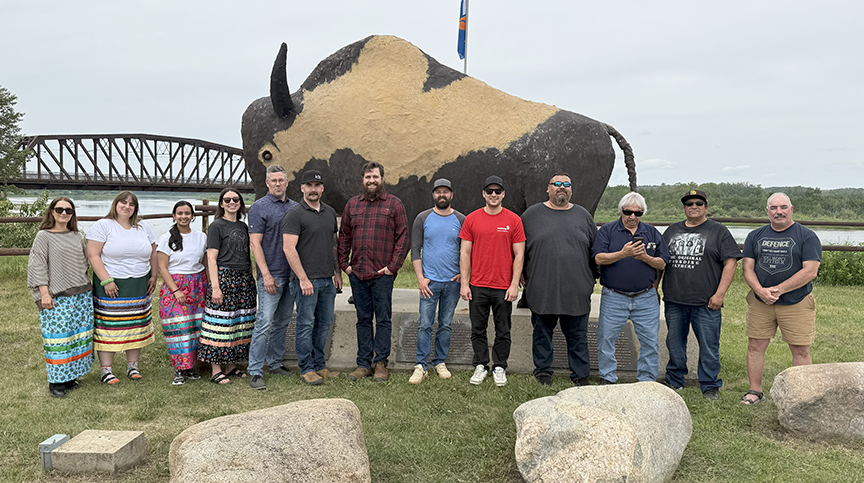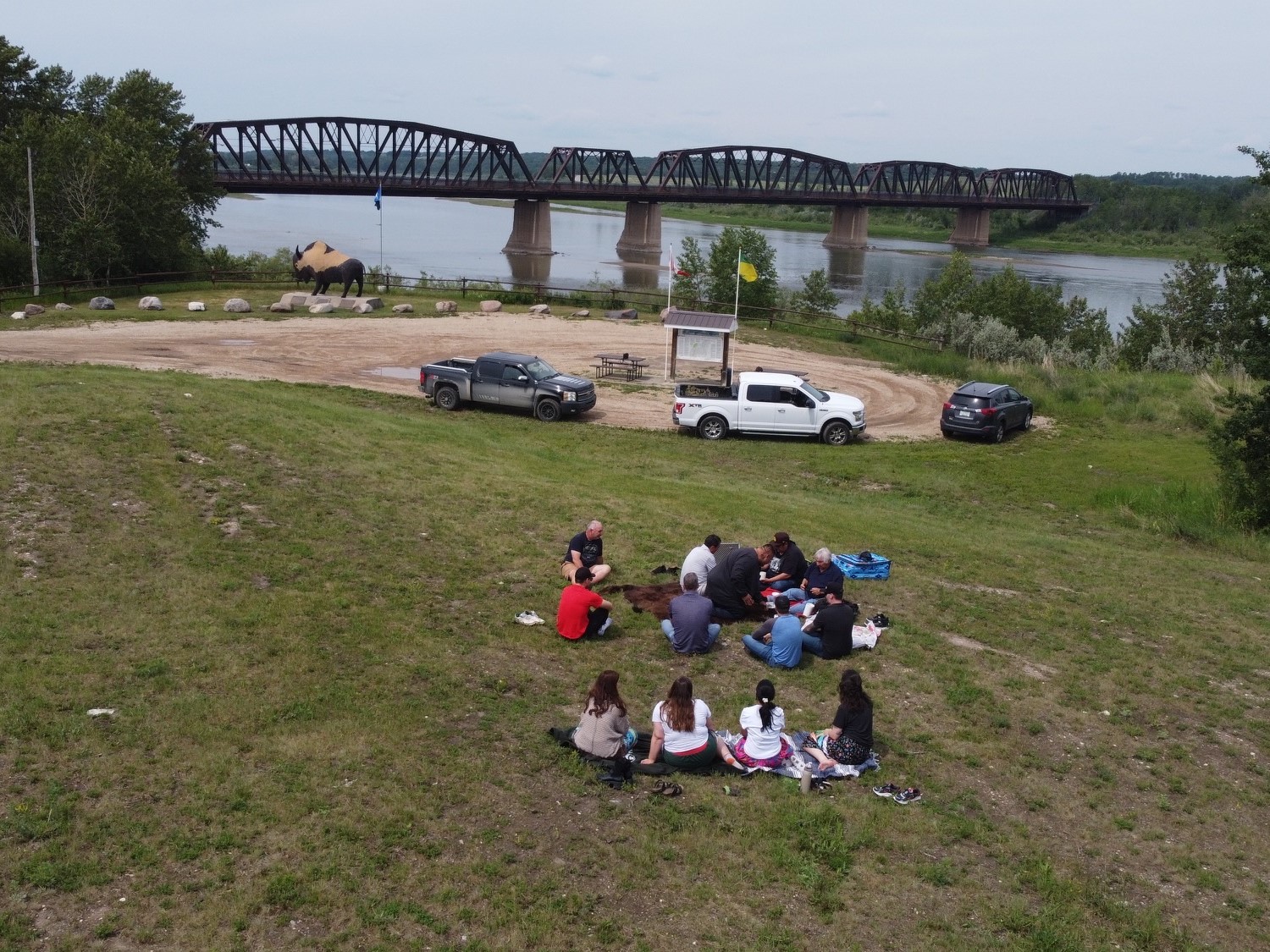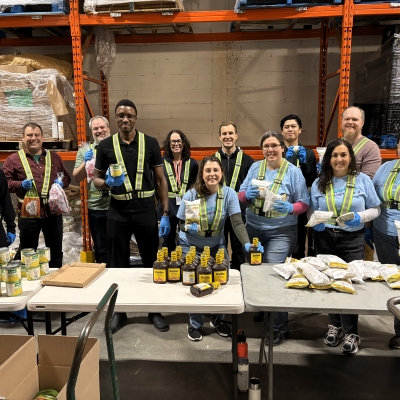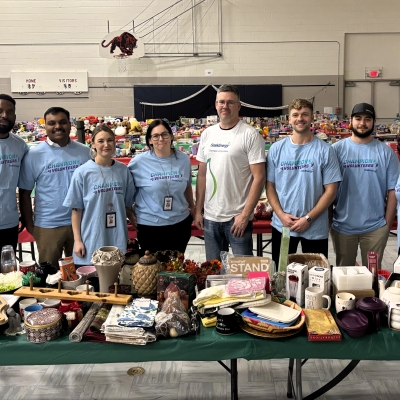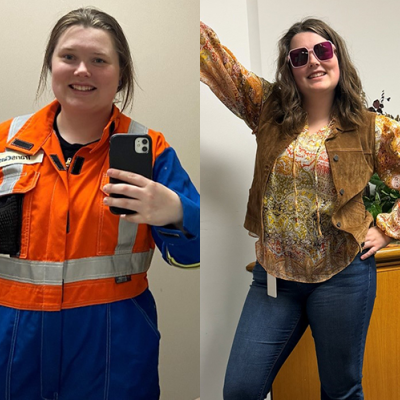'Starting in a good way': A pipe ceremony’s important role for a project
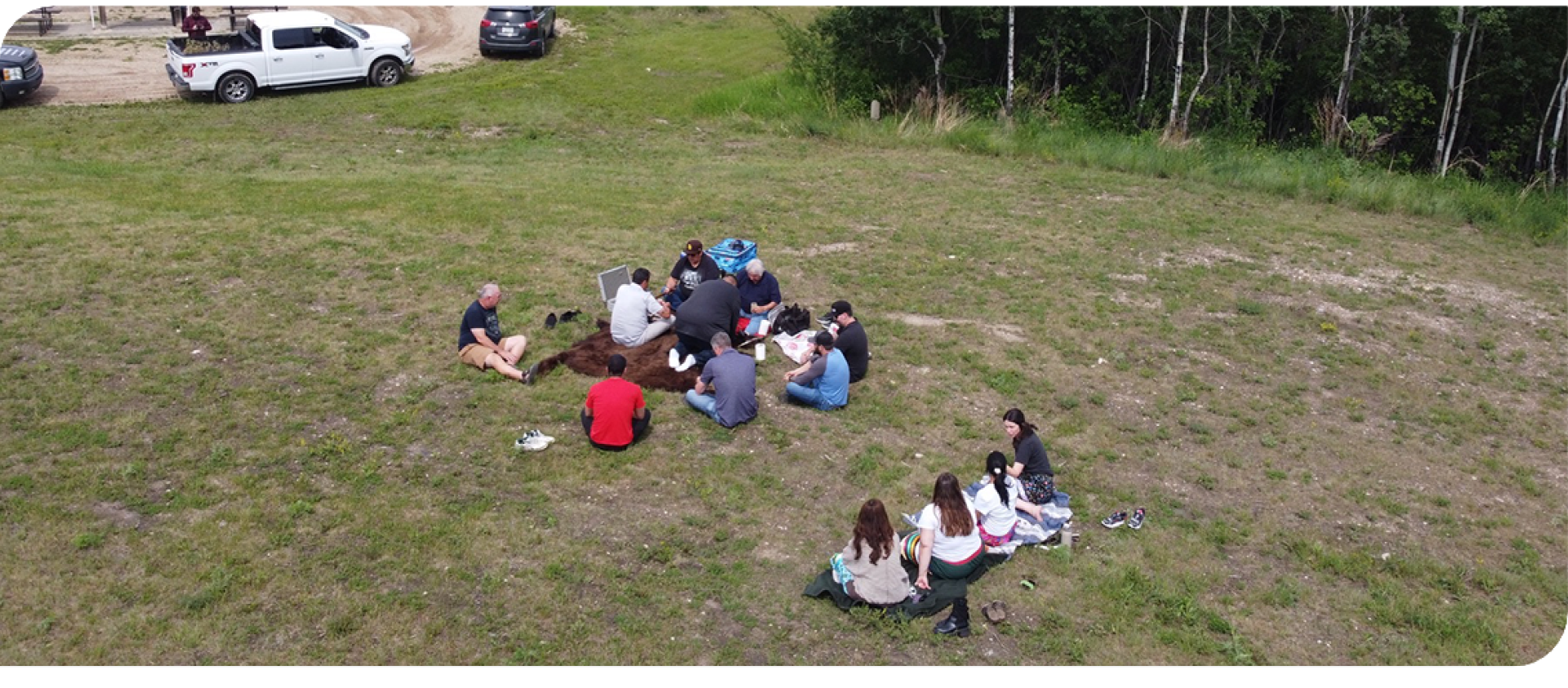
On a sunny day in June, a team of SaskEnergy employees met with an Indigenous Elder, consultants, and the Mayor of St. Louis, Saskatchewan. They wanted to begin a pipeline replacement project, occurring within village limits, with care and respect.
Elder Calvin and his team from Fox Valley Counselling led a pipe ceremony for the group alongside the South Saskatchewan River — an important area to Indigenous and Métis communities. The ceremony took place near the buffalo monument in St. Louis, which holds deep cultural meaning.
“We’re learning to recognize the importance of the land through ceremony,” says Joseph Daniels, SaskEnergy’s Director of Indigenous Engagement. “It’s about asking for forgiveness, blessing the work, and keeping our workers safe.”
“This was one of the most meaningful pipe ceremonies I’ve ever been part of,” says Ashley Syrgiannis from SaskEnergy’s Environment & Sustainability team. “Being in a place that matters so much to Indigenous people made it feel powerful.”
Even before any digging would begin, the project team was focused on doing things properly. They planned carefully and worked together to solve problems. They combined cultural respect, community involvement, and engineering skills to handle every challenge.
The project, located near St. Louis, involves replacing a natural gas line. But it’s far from a simple job. The pipe runs under the South Saskatchewan River, in an area which is both technically difficult and culturally important.
As the area is also close to a cemetery that may have unmarked graves, SaskEnergy brought in experts to study the site. Archaeologists will also be present during all digging to make sure no graves are disturbed.
“This was the most important part of the project,” Ashley says. “We wanted to respect the land and reduce our impact.”
Because the river is so meaningful to Métis and First Nations communities, the team will be holding several ceremonies during the project.
“When people outside the project see what we’re doing, they’re often surprised — but also proud,” says Joseph. “It shows we’re doing the work in a good way.”
The engineering side of the project has also been challenging. The old gas line was hard to inspect and had corrosion risks. The project team chose a method called horizontal directional drilling (HDD) to replace the pipe.
The ground under the river had flowing sands, so the decision was made to drill 24 hours a day to combat the challenges with the subsurface conditions. An engineered drilling fluid is used to keep the hole stable. With construction workspace tight between highways, homes, and the cemetery, the team had to get creative — even coordinating a temporary road closure to provide room to lay the pipe.
“Projects like these smaller replacements sometimes get a misconception that they’re just easy layups, but with this one, there’s been a lot of nuances and challenges that we’ve had to navigate that have made it anything but simple – and that’s before any construction work has even started,” says SaskEnergy engineer Jonah Gardikiotis.
Noise mitigation, additional pre-planning and custom tools added more complexity. But every choice has been made with care for the environment and culture.
“Elder Calvin emphasized the importance of asking Mother Earth for permission,” says Jonah. “That message really resonated with us. It’s not just about starting a project, or getting it done — it’s about starting it in a good way, and completing it in the right way.”
Two more pipe ceremonies are planned to mark important moments in the project.
“Things go a lot better when you’re able to have that relationship with the various communities, whether its First Nations, towns, cities, or villages,” says Joseph. “We want to make sure that we’re engaging and that we’re listening, and that we’re doing things right from beginning to end.”
